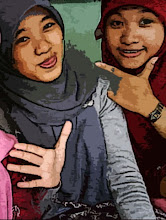Plant Movement
Monocotyl and Dicotyl
Difference | Monocotyledon | Dicotyledon |
Root system | Fibrous | Aerial |
Boundary of root end with calyptra | Clear | Not clear |
Pericycle | It’s consist of severel cell layer of thick wall | It is consist of one cell layer of thick wall |
Location of tranportation bundle | Xylem and phloem alternatingly | Has collateral property, phloem is outside, xylem is inside |
Medulla | Exist | Not exist |
Cambium | Not exist | Exist |
Difference | Monocotyledon | Dicotyledon |
Location of transport bundle | Regular | Spreading |
Cambium | Exist | Not exist |
Growth | Enlengthen and enlargement | Enlengthen, limited, enlargement |
MUSCLE
Joint
pembuluh darah
1. Pembuluh darah arteri atau nadi
Pembuluh darah arteri adalah pembuluh darah yang berasal dari bilik jantung yang berdinding tebal dan kaku.
- Pembuluh arteri yang datang dari bilik sebelah kiri dinamakan aorta yang tugasnya mengangkut oksigen untuk disebar ke seluruh tubuh.
- Pembuluh arteri yang asalnya dari bilik kanan disebut sebagai pembuluh pulmonalis yang betugas membawa darah yang terkontaminasi karbon dioksida dari setiap bagian tubuh menuju ke paru-paru.
2. Pembuluh darah vena atau balik
Pembuluh darah vena adalah pembuluh darah yang datang menuju serambi jantung yang bersifat tipis dan elastis.
- Pembuluh vena kava anterior adalah pembuluh balik yang berasal dari bagian atas tubuh.
- Pembuluh vena kava pulmonalis adalah pembuluh balik yang berasal dari bagian bawah tubuh.
3. Pembuluh darah kapiler
pembuluh darah kapiler adalah ujung yang berada di paling akhir dari pembuluh arteri. Jaringan pembuluh darah kapiler membentuk suatu anyaman rumit di mana setiap mili meter dari suatu jaringan memiliki kurang lebih sekitar 2000 kapiler darah.











